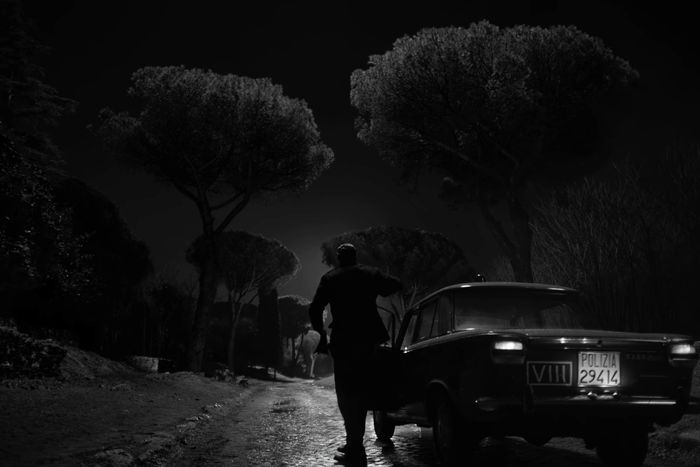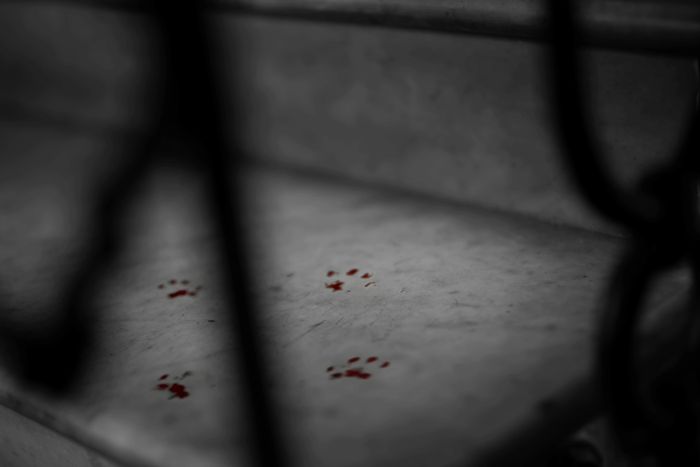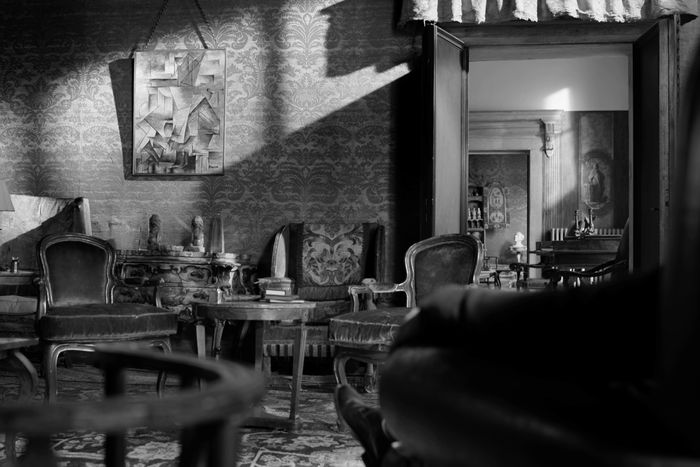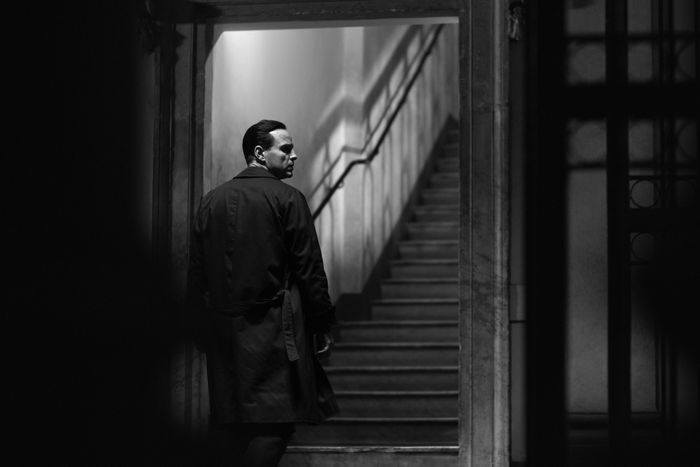
Spoilers follow for Netflix’s Ripley.
In Italy, according to American television, the sunlight is always golden, the seas are azure blue, the flora is every shade of green, and the marble statues scattered across city piazzas are always creamy white. Ripley rejects all that. With a chilly, textured black-and-white palette for the boot-shaped country in which con man Tom Ripley (Andrew Scott) reinvents himself, Netflix’s Patricia Highsmith adaptation becomes one of the most conceptual, visually uncompromising TV shows of the year. Steven Zaillian’s version of Ripley is fascinated with the 16th-century Italian Baroque painter Caravaggio, so famed for his use of contrasting light and dark that he spawned stylistic acolytes termed the Caravaggisti. Once the series establishes the comparisons between Tom and the Old Master, it becomes clear that Ripley itself is a kind of Caravaggisti, an experiment in black-and-white that relies on motifs to reflect its central character’s ominous alienation. That approach is thematically appropriate, sure, but it also absolutely rips.
Longtime collaborators Zaillian and cinematographer Robert Elswit engage the eye with reflections, shadows, and patterns, push the limits of the frame with ultrawide compositions and dueling foreground and background images, and go to bat for the discomfiting power of negative space. Every frame of Ripley deepens the series’ emotional disquiet and visual splendor, and Italy has rarely looked this beautiful or cruel. Here, a list of 37 setups, frames, and moments in Ripley that would blow Caravaggio’s mind (and already did mine).
Silhouettes and shadows
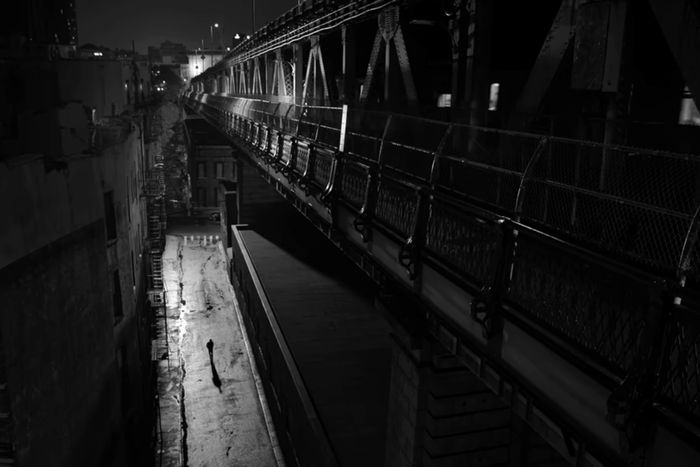
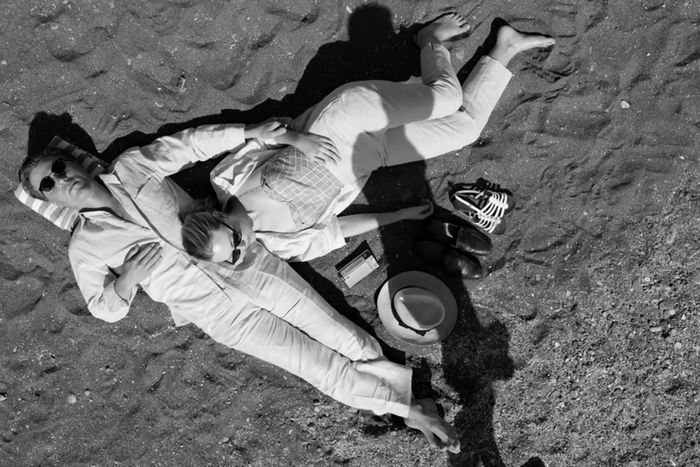
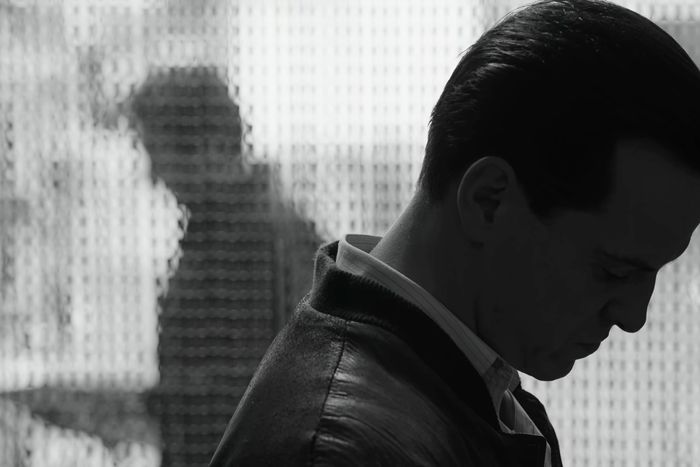
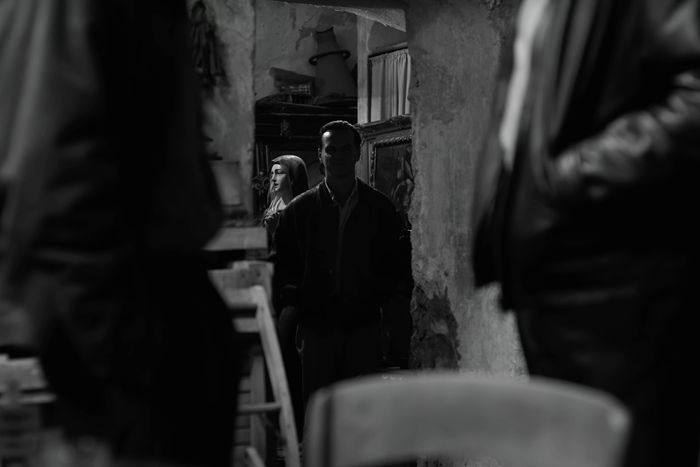
Tom as abstraction, monster, creep? Yes to all! Look at how often Ripley presents him as the the outline of an intruder, dissolving others’ tranquility or secrecy before disappearing into the darkness from whence he came like a specter in the night. The shadows enveloping him as he enters Carlo’s lair of stolen goods is a personal favorite.
Staircase purgatory
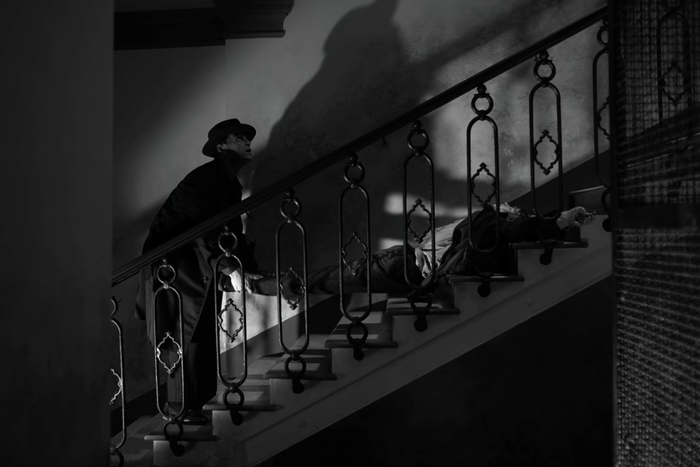
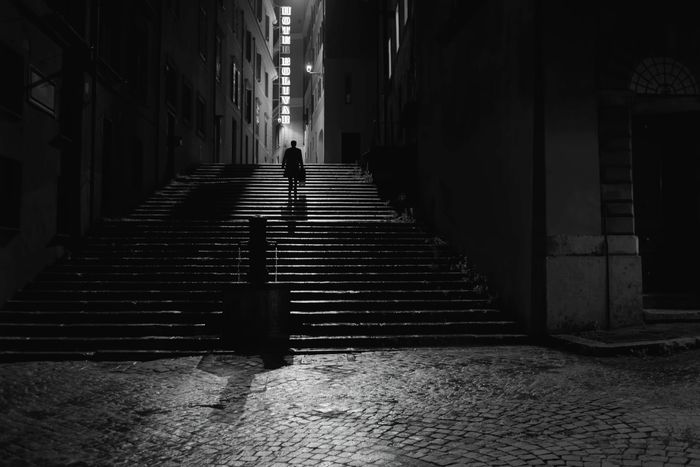
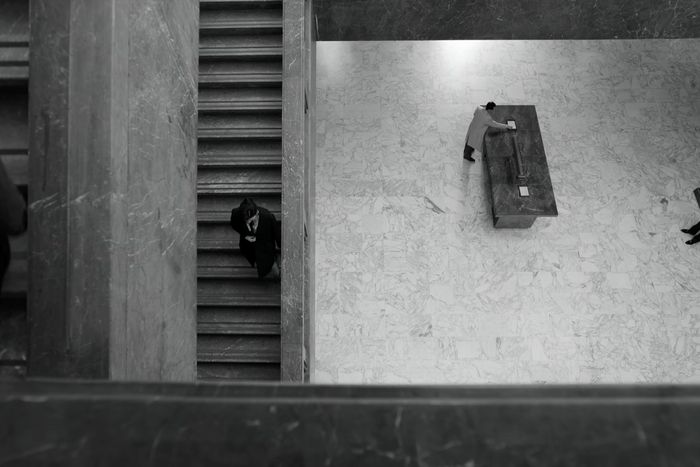
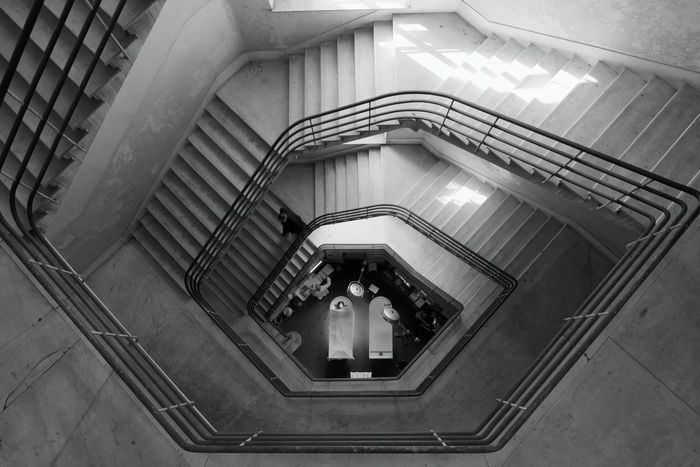
“It seemed like everywhere we went there were stairs,” Zaillian said of location-scouting and shooting Ripley. Those flights take on special meaning as Tom moves up and down and up and down in his chase for a comfortable life. The labyrinthine caves of steps he climbs in Atrani to find Dickie isn’t as starkly angular as the apartment staircase he later encounters, but the general idea of Tom needing to move through these spaces to literally and figuratively end up where he wants to be holds, his desire for upward mobility physically rendered over and over Ripley’s eight episodes. And for people who aren’t Tom, the pentagon-shaped stairs Inspector Ravini takes to the morgue for Freddie’s autopsy make it look like he’s descending into Hell.
Patterns and reflections
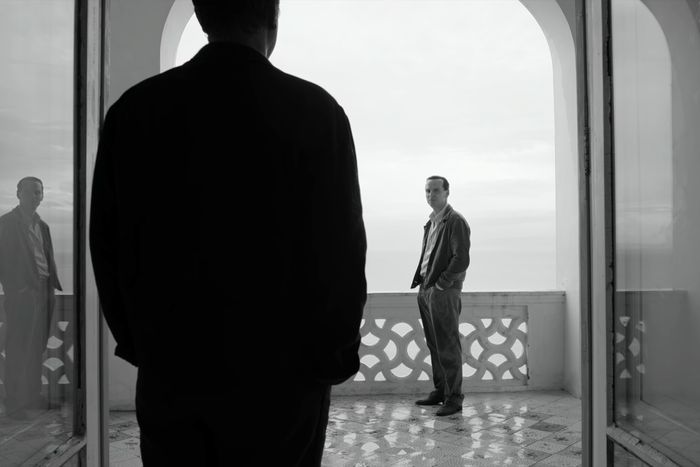
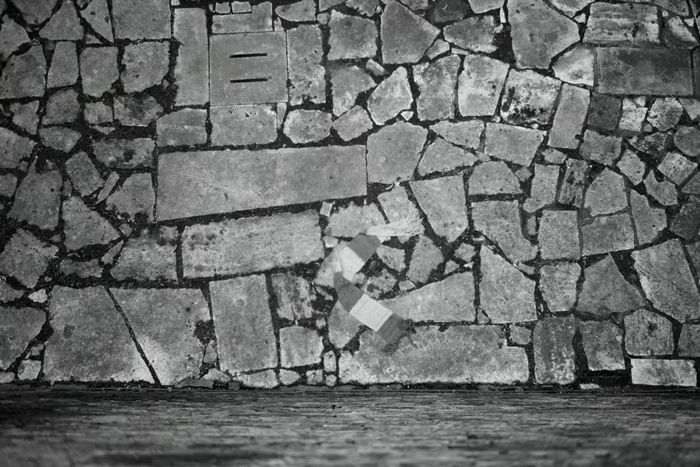
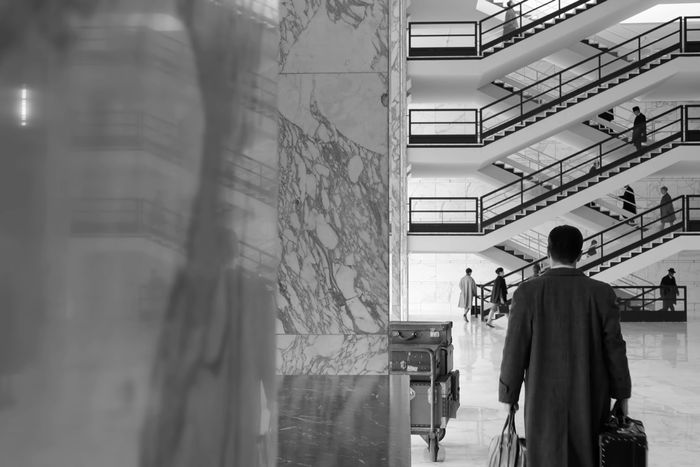
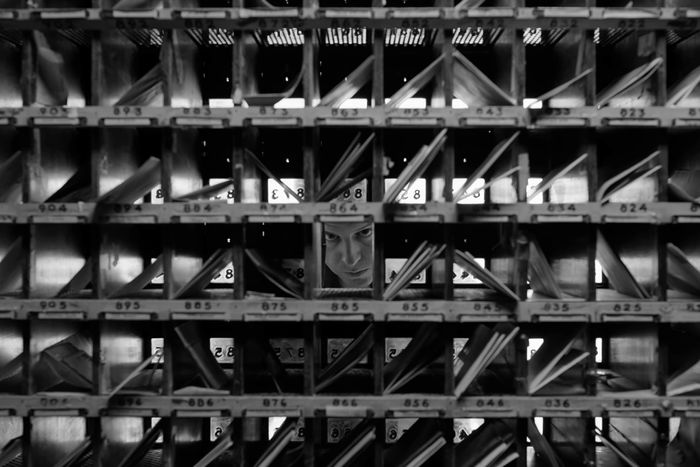
M.C. Escher’s impact! Ripley’s repetition and refraction — the reality-challenging lines of train-station stairs and post-office boxes, Tom’s reflection in Dickie’s balcony glass doors, the misshapen edges of cobblestone streets — remind us that Tom, trapped within systems of order he’ll need to manipulate in his journey toward becoming a mid-century Narcissus, isn’t who he says he is. The series’ established visual language is so clean and rigid, it’s unsettling when Ripley breaks its own code, as it does when Tom tosses the scarf Marge knit for Dickie over an elevated walkway onto the disjointed stone pattern below. The scarf is an interruption that Tom, and Ripley itself, can’t abide.
Bodies and blood
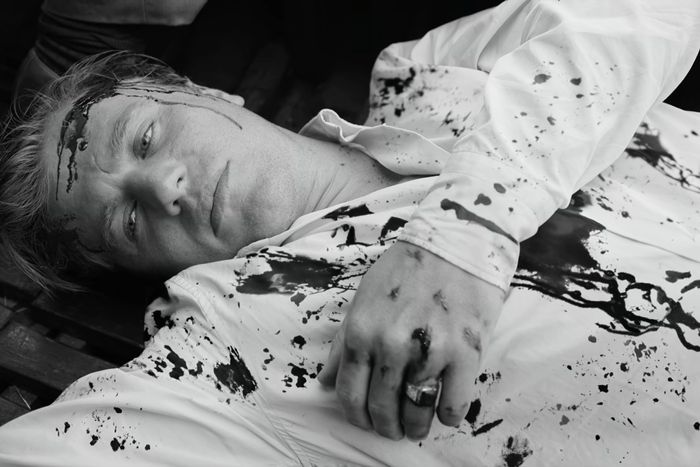
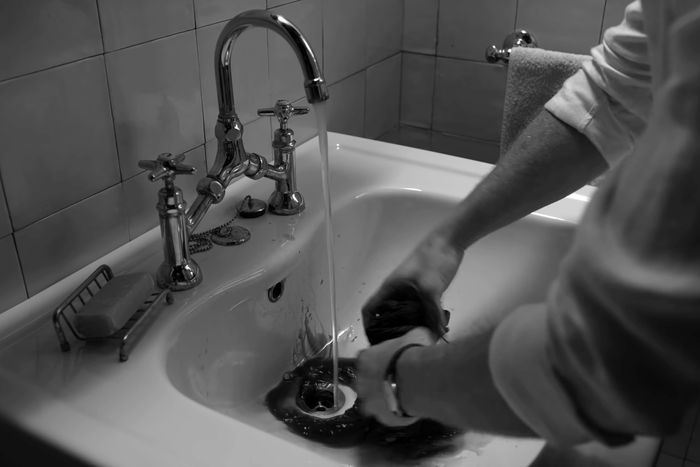
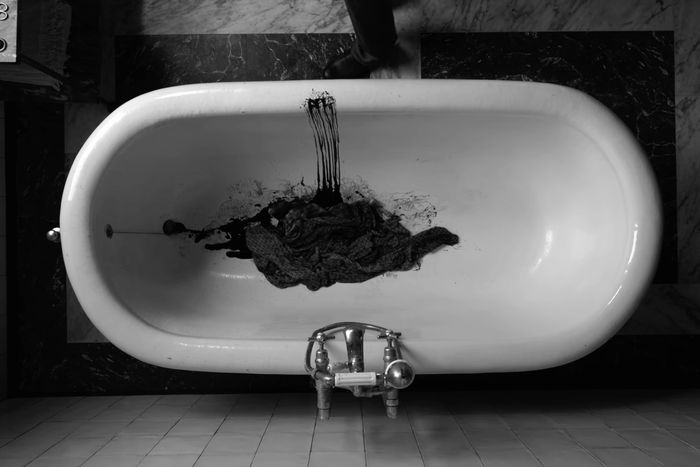
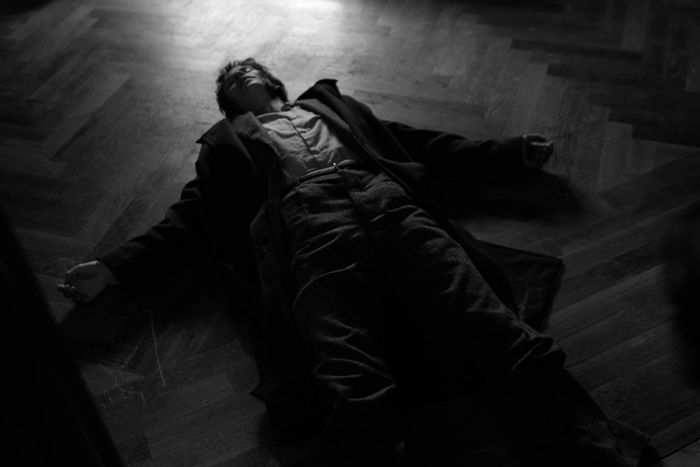
Yes, Ripley is in black-and-white. But its gradients are so rich and deep, you can easily imagine the garnet-maroon-scarlet-sangria-rust shades of blood gushing out of Dickie’s and Freddie’s bodies, washed away by Tom in his sink or discarded in his bathtub, and — in the series’ most jarring shot, a rare instance of color — tracked around his apartment building by the cat who knows what Tom’s been up to. The series is also inundated with religious imagery, and there’s a delightfully macabre quality to how Freddie’s body falls with his arms outstretched as if he’s Christ on the cross, a sacrifice Tom has to make to become his desired self.
Arch rogue
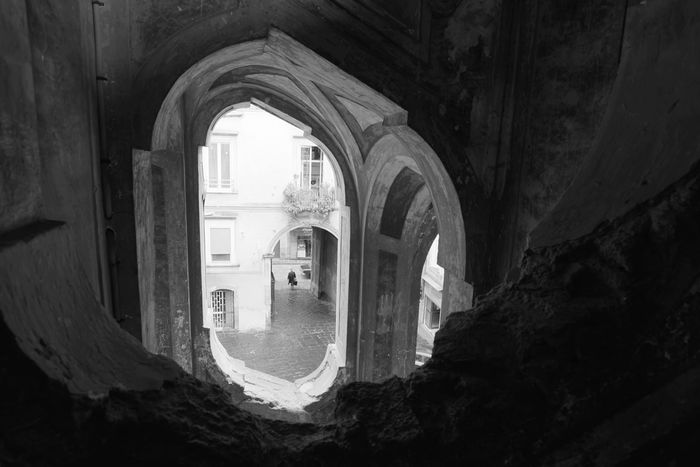
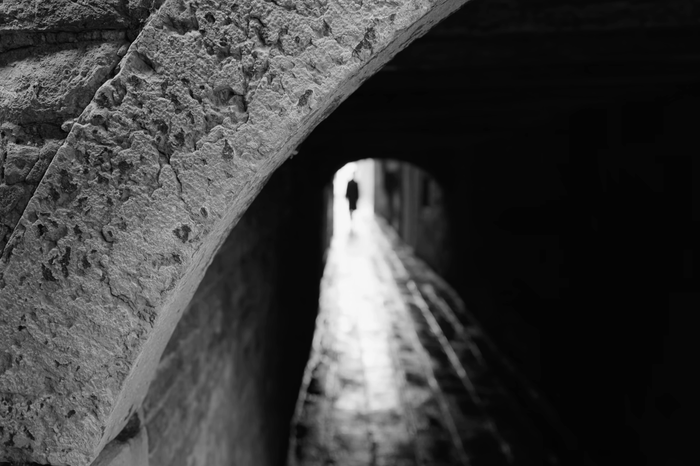
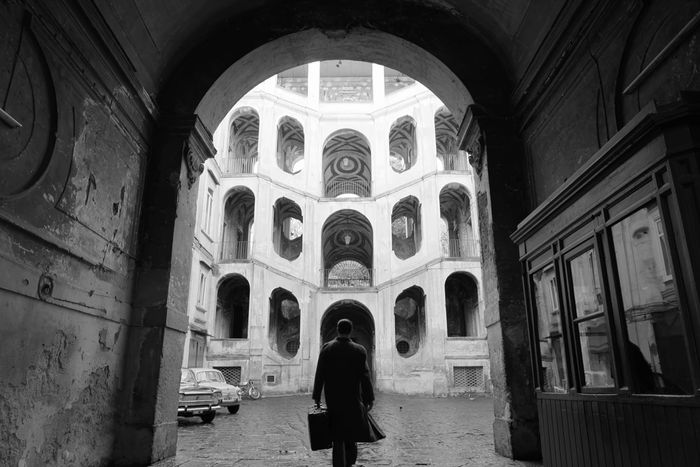
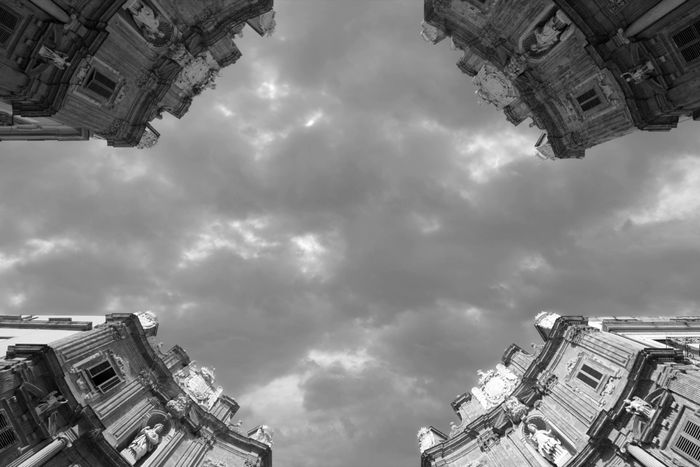
Italian architecture, it’s neat!
The artist is present
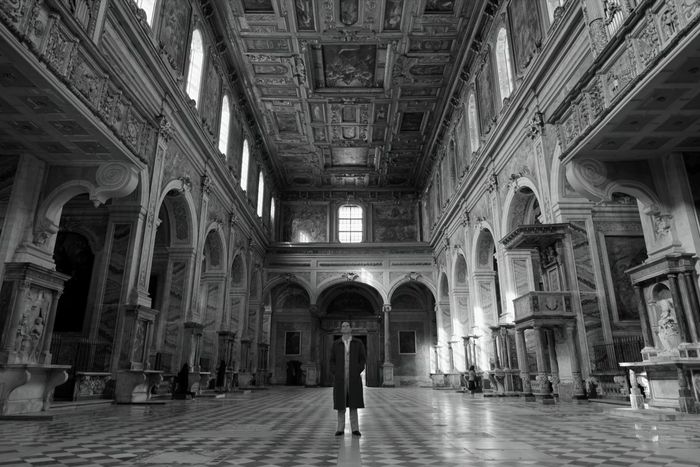
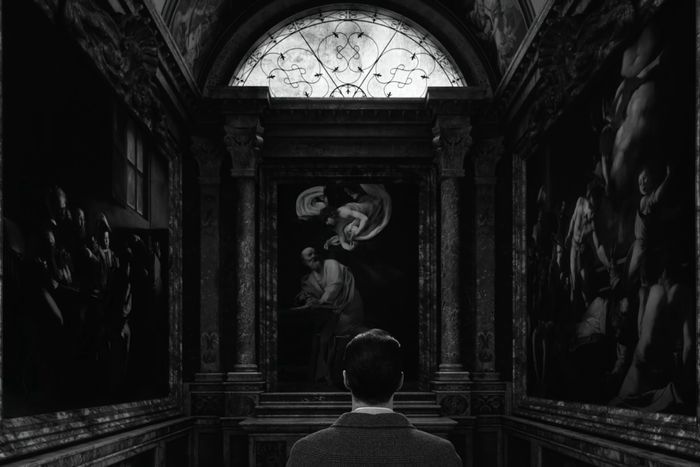
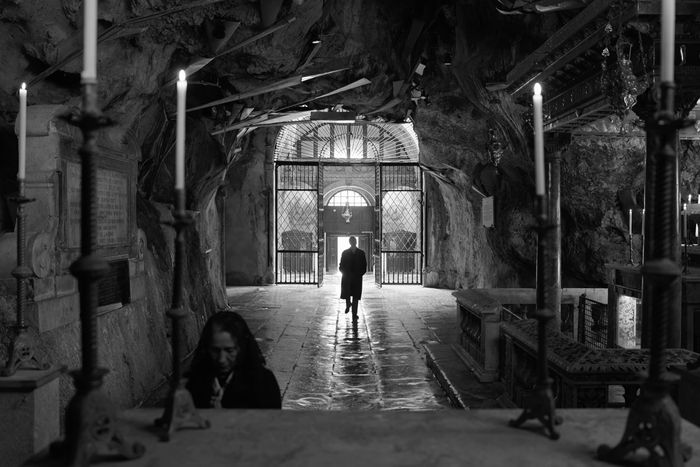
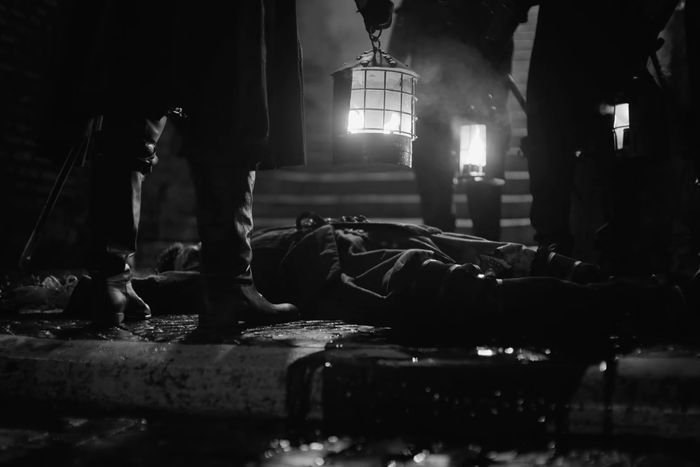
In a series where the main character experiences a sort of epiphany about art, creativity, beauty, and God when looking at the paintings of Caravaggio, the viewer will, of course, have to behold said Caravaggios. Ripley depicts the works, including The Seven Acts of Mercy (ca. 1607), The Martyrdom of Saint Matthew (ca. 1599–1600), David With the Head of Goliath (ca.1605–10), and a replica of 1609’s Nativity With St. Francis and St. Lawrence (the original was stolen in 1969), in a way that reinforces Tom’s own smallness against the large-scale paintings and ancient, holy buildings that house them. He’s a tiny figure absorbing it all, the spaces gigantic around him, the shadows dark and dense. The finale’s flashback to Rome, 1606, where police find Ranuccio Tomassoni’s body and pursue Caravaggio for his murder, is also unbelievably lush with its lighting, particularly in the flickering fire of lanterns and the blood oozing out of Tomassoni’s wounds.
Darkness and light
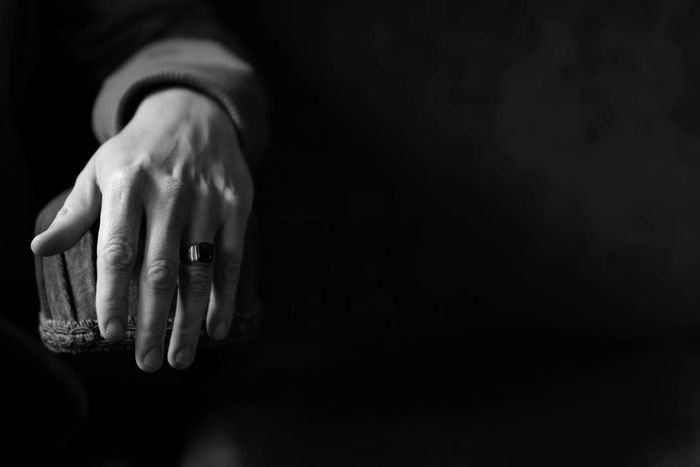
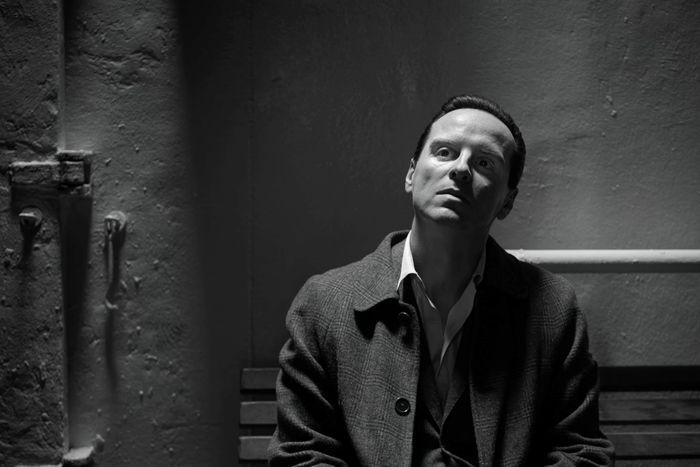
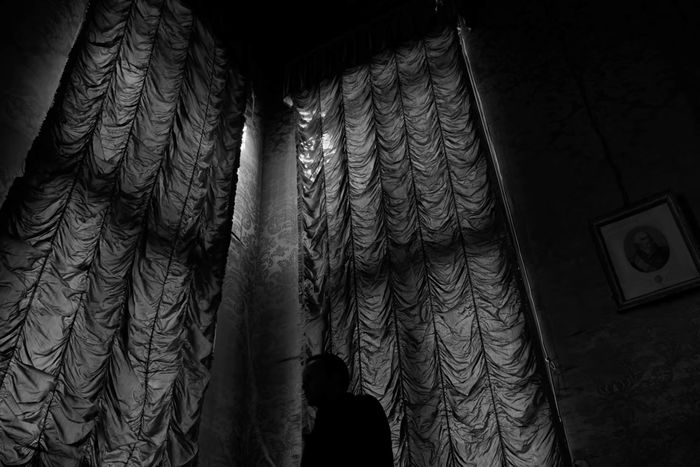
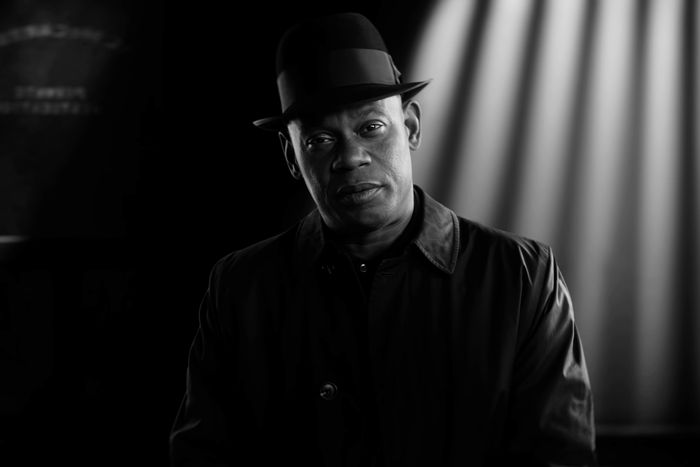
Here’s Ripley taking Caravaggio’s lessons and applying them to itself. Look how the light seemingly appears and disappears out of nowhere, illuminating or darkening its subjects without announcing its source. Tom’s hand, now wearing Dickie’s ring, seemingly floats in shadow, and he glows from within when sitting on the ferry. The light in his imagined face-off against Bokeem Woodbine’s detective streams in from nowhere, an angle later mirrored when Tom hangs up the Picasso he stole from Dickie. An early shower scene in New York City, when Tom is still living at the crummy boardinghouse, gives us both extremes, with the light from the showerhead forming a kind of halo around Tom’s head and the churning water emerging from the shower drain an excess of murk. It’s striking and unnerving, which is basically Ripley’s whole thing.
Fun with negative space
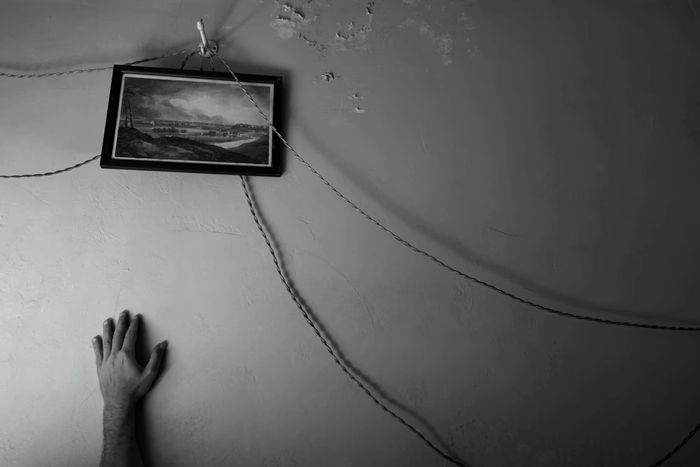
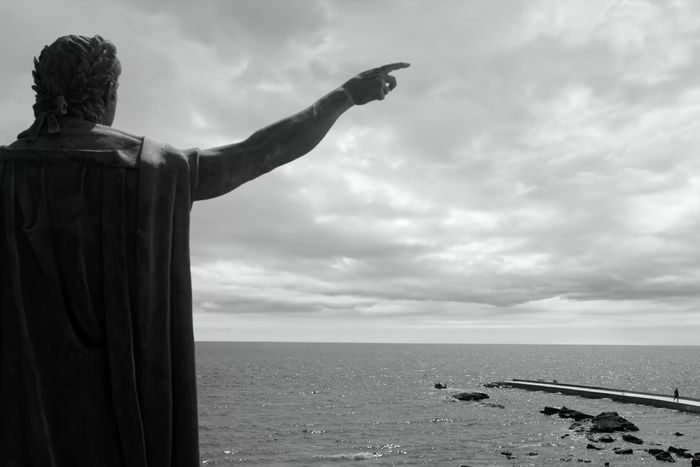
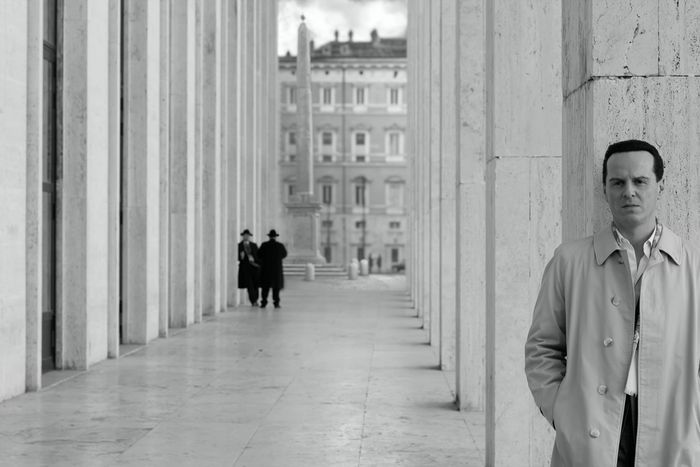
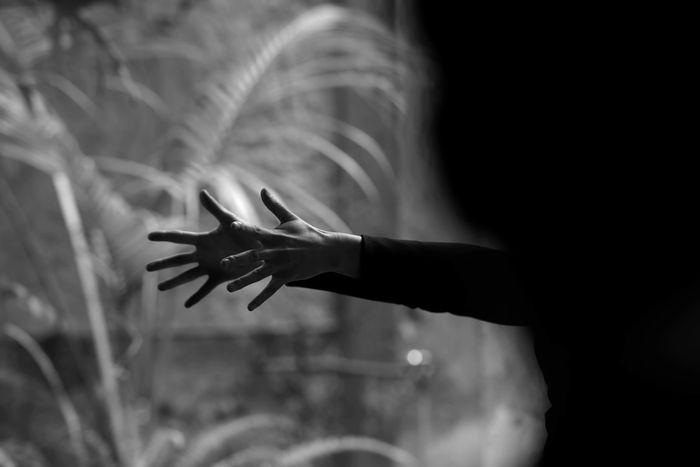
Tom is always grasping, watching, reaching, his want communicated best in moments that maximize the rule of thirds. Ripley ends by asking us, “Who is Tom?”, and these images, with their visual emptiness and loaded yearning, are an unforgettable answer.



